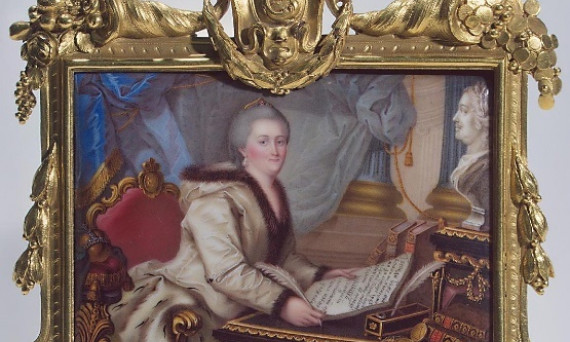On December 4 at 6 p.m. Catherine Phillips, Professor of Art History of the European University, will hold an inaugural lecture entitled "‘How to be a European.’ Old masters for Catherine the Great" at the Conference Hall. The working language is Russian. Admission is free.
Catherine the Great founded the now internationally-renowned drawings collection of the Hermitage Museum with the purchase in 1768 of the cabinet of Count Charles Cobenzl (Brussels). At a time when there were no collections of drawings in Russia, no collectors to emulate, and no established tradition, the purchase of over four thousand drawings was a radical act, far more innovative than the purchase of paintings. What led Catherine to make the purchase? What was its purpose? Did she herself understand the significance of the acquisition?
So much has been said and written about the influence of foreign writers and thinkers on Catherine and her policies, particularly as relates to the arts, that less insistent voices stressing the role played by Russians in shaping and informing her understanding of the role of the arts in the immediate period after she came to power sometimes go unheard.
Looking at Catherine’s correspondence and analysing the chronology and nature of Catherine’s collecting of things other than paintings, it becomes clear that in the first years of Catherine’s reign she owed much to the advice and knowledge of several Russians who had spent time in Europe. It was men such as Ivan Betskoy, the éminence grise of Catherine’s cultural projects, Dmitry Mikhaylovich Golitsyn and Dmitry Alexeevich Golitsyn who persuaded her of the significance of artistic policies overall, but it seems also to be they who convinced her that the possession of a collection of drawings was a necessary mark of ‘belonging’ to a European intellectual elite. Between 1755 and 1761 Ivan Betskoy was travelling in Europe with his niece and her husband — Dmitry Mikhaylovich Golitsyn. They spent considerable time in Paris, not the only place where drawings were being actively collected but the centre of theoretical discussions of the value and purpose of drawings collections. Young Dmitry Alexeevich Golitsyn also came into contact with them in this period. So it is telling that the first collections of drawings formed by Russians belonged to Betskoy and D. M. Golitsyn and that D. A. Golitsyn was to be the intermediary for the purchase of the Cobenzl drawings, to buy at the Muilman sale of drawings in later years, and to form his own collection of Dutch drawings.
The European experience of these men in the second half of the 1750s and early 1760s was key to Catherine’s understanding of the importance of art as a political and propaganda weapon. Was she also influenced by the example of Stanisław Poniatowski, who was to form his own important collection of drawings? And did Catherine, whose attitude to art was markedly pragmatic, truly see the function of drawings as the object of collecting (in contrast to their function as, for instance, an aid to study for those training at the Academy of Arts), or was their possession merely part of her desire to be seen to have the right cultural credentials, to be a truly European monarch?
